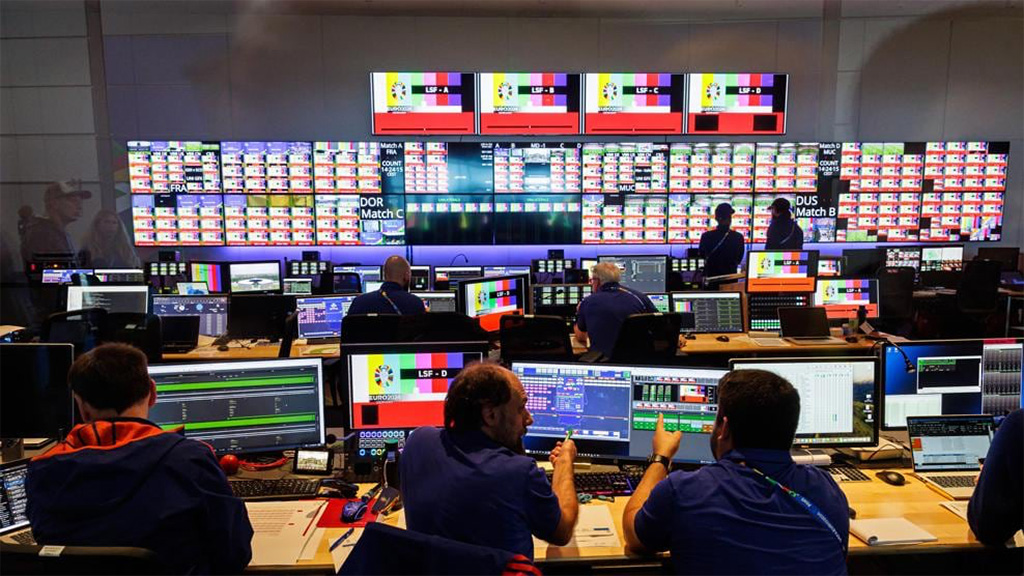The Euro 2024 football tournament is not being produced in 4K and neither was the Champions League Final. Instead, football fans will have to make do with production in high definition with high dynamic range. Meanwhile, major Wimbledon tennis matches will be provided in 4K, as will the entire Olympic Games in Paris, but not everyone will get to see the ultra-high-definition coverage.
EUFA decided to provide its world feed of the Euro 2024 coverage in 1080p high definition with high dynamic range. That is a step down from the previous tournament, which was produced in 4K with high dynamic range.
In the United Kingdom, the rights are shared between the BBC and ITV, neither of which has the capacity to broadcast 4K, apart from through online services like the BBC iPlayer.
Hisense, which is a sponsor of the Euro 2024 games, is promoting them in association with its 4K TVs, including its new Freely models, but the irony is the matches themselves will not be in 4K.
The Champions League Final from Wembley was also produced in 1080p, although it was upscaled to 4K for host broadcaster TNT Sports on its Ultimate channel in the United Kingdom. Since 2015 it had been originated in 4K.
The Euro 2024 will be televised globally in more than 200 territories by over 130 broadcast partners. The hub for this activity is the international broadcast centre in Leipzig, which is connected to the 10 stadia via a dedicated optical fibre network. The standard plan for each match involves 46 cameras, including slow-motion and high-speed cameras.

UEFA said that it has carried out extensive high-level benchmark testing with manufacturers and broadcast partners with the aim of ensuring consistency, whilst also maximising the quality of signal when contribution and distribution limitations are factored in. The outcome of these tests led to the conclusion that producing in 1080p50 HDR, a single multi-purpose high-quality format, provides the best base for quality and consistency and offers the best platform for multiple use. It intends to use this format for all future competitions.
Wimbledon Broadcast Services, which took over the role of host broadcaster of the tennis championships in 2018, will continue to provide coverage across 18 courts, with Centre Court produced in 4K UHD with HDR. In the United Kingdom, that will only be available through the BBC iPlayer, with other broadcast coverage available in high definition.
Olympic Broadcasting Services will produce coverage of the Olympic Games in Paris entirely in 4K with HDR and 5.1.4 immersive audio for the first time. There will be over 11,000 hours of output, which is almost double that for the London 2012 Olympics.
The BBC has yet to announce its plans, but any of its 4K coverage is likely to be limited to the BBC iPlayer. Discovery Communications, which has the European rights to the games, is likely to provide ultra-high-definition coverage through Discovery+ and its Eurosport 4K channel, available through Sky.
In France, TDF is rolling out ultra-high-definition transmissions across France. Over half the country can now receive the France 2 channel in UHD and that will reach over 70% of the population in time for the Olympics, for which a further UHD channel, France 3 will be made available.
Some might suggest that high definition is good enough, particularly with the benefit of 1080p50 images rather than interlaced pictures, together with high dynamic range and a wider colour gamut.
For those that have invested in a 4K television, which many homes now have, it is a confusing picture. When you see a proper ultra-high-definition picture, the difference is obvious, despite what many experts might suggest, although it is less clear than the progression from standard to high definition.
It seems that 4K delivery is a luxury that many free-to-air broadcasters cannot afford or justify. Meanwhile, pay television platforms continue to invest in differentiating their services.
